Car photography is an interesting and highly rewarding genre. The stakes are high and so are the perks. Getting a major gig in car photography can be a challenge but one way to help your chances is by practicing and building a nice portfolio. In this article, we look at 16 car photography tips to help you get some stunning images.
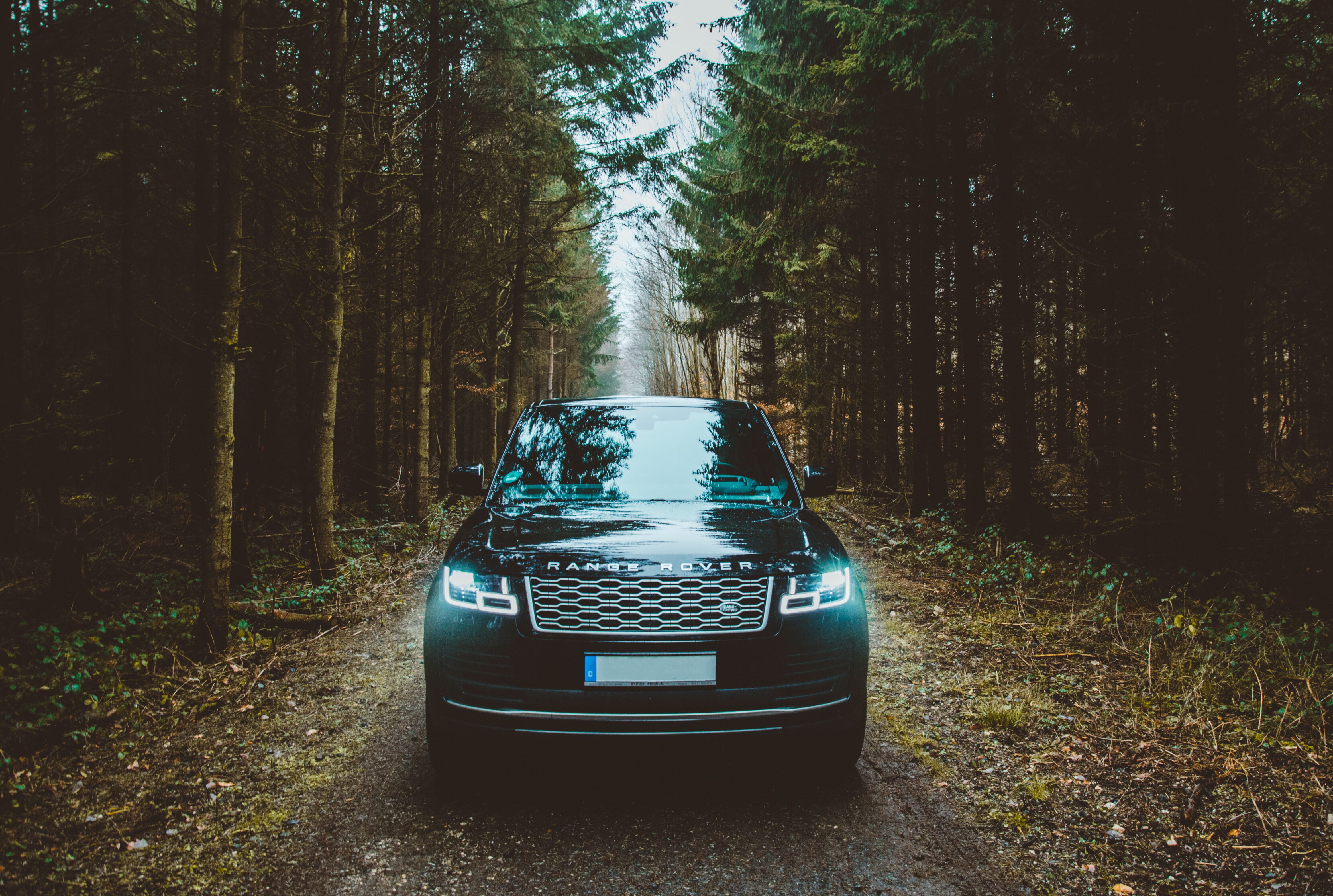
Car Photography Tips:
1. Choose the Right Time of Day to Shoot In
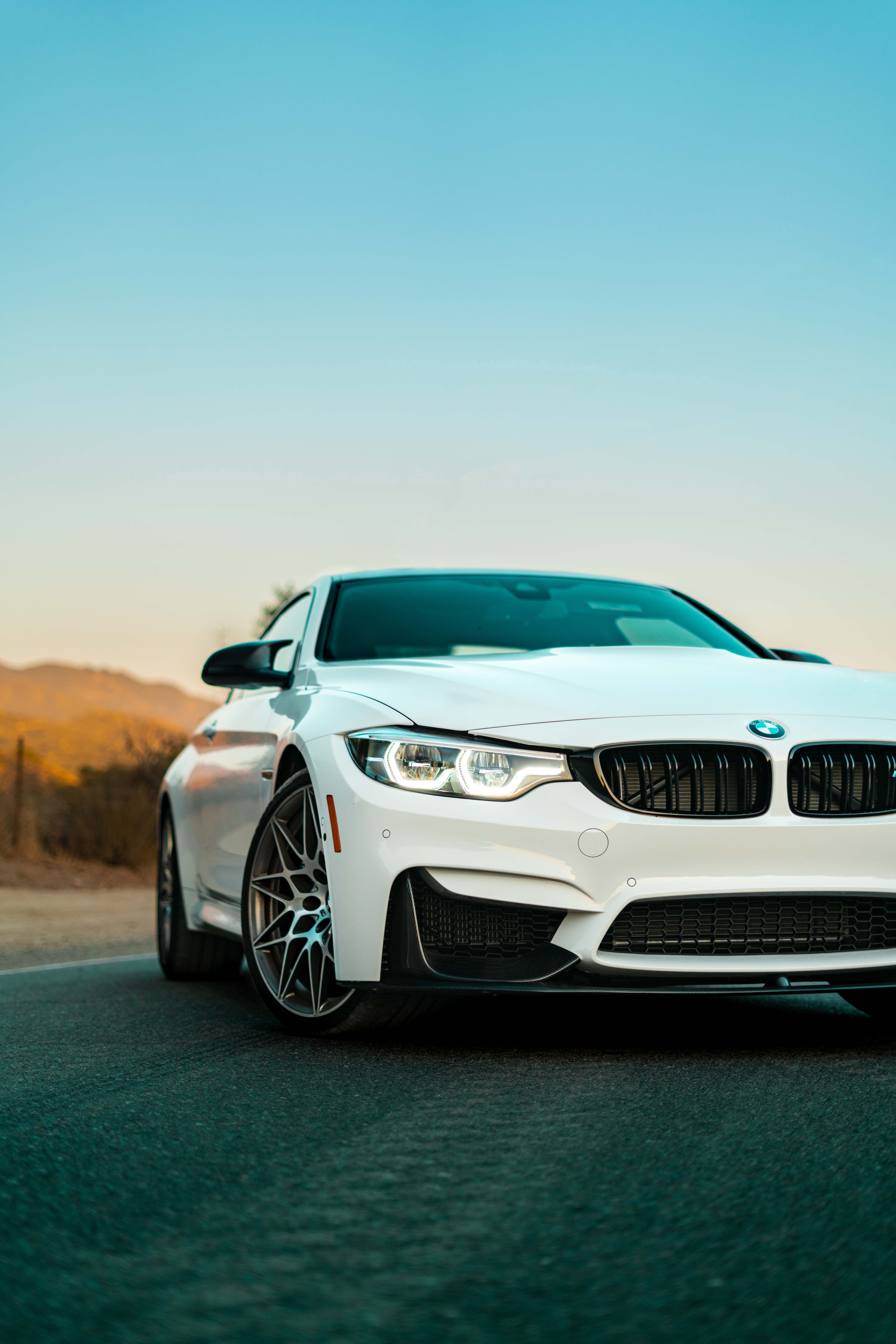
Just as you shouldn’t shoot portraits at midday, you should also avoid shooting your car photos when the sun is in the middle of the sky. If the sun is directly overhead, the light is at its harshest.
Why does that matter?
Harsh light produces heavy shadowing and stark contrast which can become unmanageable at times.
It also produces the worst kind of glare and reflection. These faults can be difficult to remedy in post-processing.
2. Be Careful of Reflections Emanating from the Surface of the Car
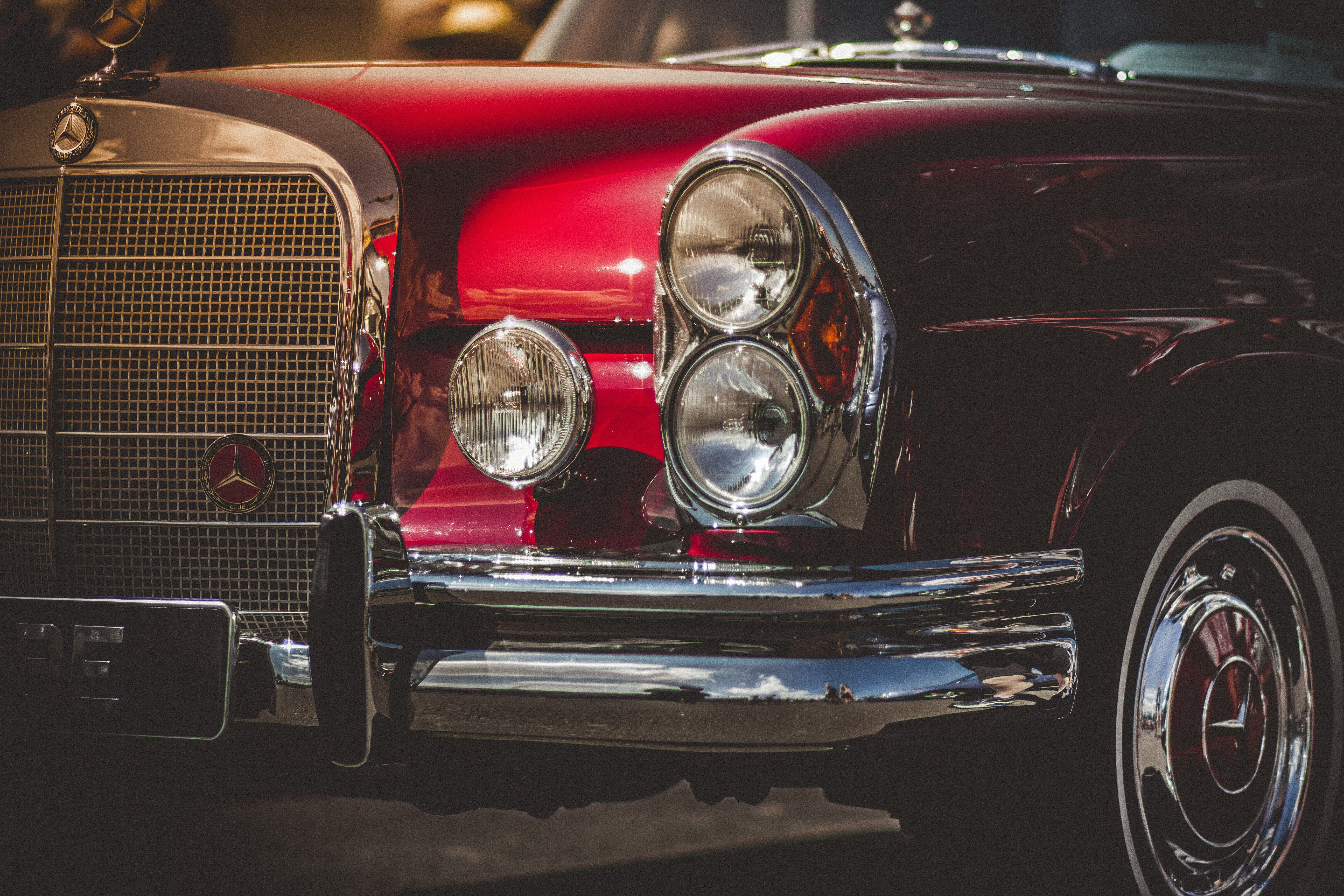
A shiny car standing outdoors under the sun is like a mirror. And with all mirrors, it is going to reflect light. Many areas of the car you are going to photograph will have blown-out highlights. You have to strike a balance to make sure your car body doesn’t appear too dark so that your highlights aren’t clipped and vice-versa. One way to handle this is by doing HDR photography.
Also, the body of the car will reflect anything around it. Trees, buildings, lights, people. It is best to have absolutely nothing around the car when it is photographed.
When shooting close-up shots, especially when trying to capture the character lines of the car, try not to shoot directly at a 90-degree angle. Try to shoot from an acute angle so that your own reflection is not caught by the car body.
3. Try Different Angles
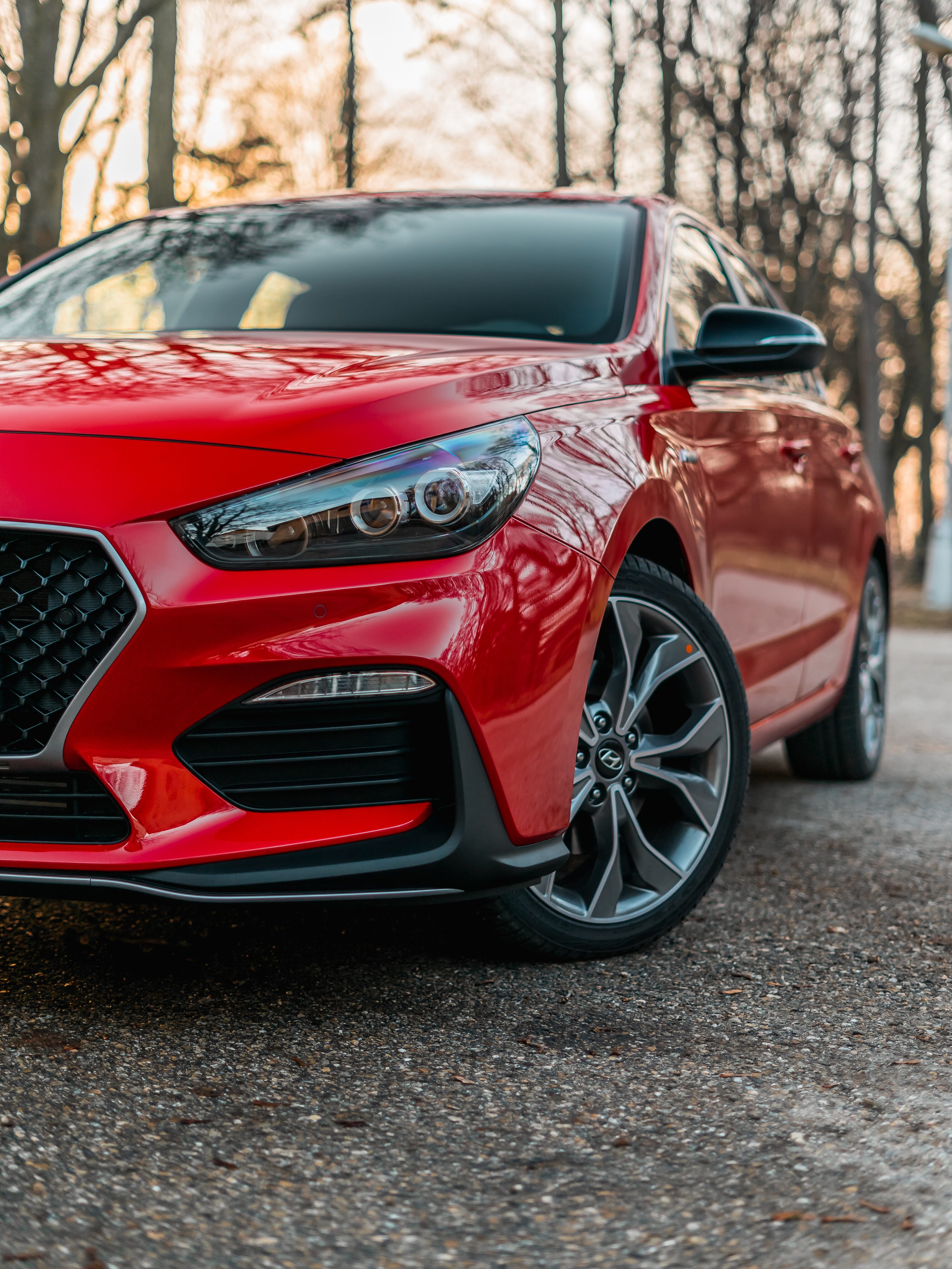
Experimenting with angles can be a great way to capture new perspectives of a car and come up with creative compositions.
However, there is a classic shot that will get you good photos time after time.
This angle is from lower down towards the ground and with the front wheels of the car turned at an angle where you can see the styling of the hubcaps.
This is such a common, fool-proof shot that you’ll see it in many car advertisements.
Of course, we still encourage you to shoot from other angles and explore to find compositions that work well but this angled wheel shot is a great starting point.
4. Get Down Low

If you’re photographing cars with a low ground clearance (think sedans and sports cars), you’ll have a great time if you shoot low.
With these types of cars, getting low gives the appearance of a larger-than-life car. This can be quite awe-striking for viewers and will be sure to impress prospective clients.
There are other benefits to this shooting technique, too. Namely, you can avoid capturing your own reflection in the body of the car.
5. Get Inside and Shoot the World Through the Front Window
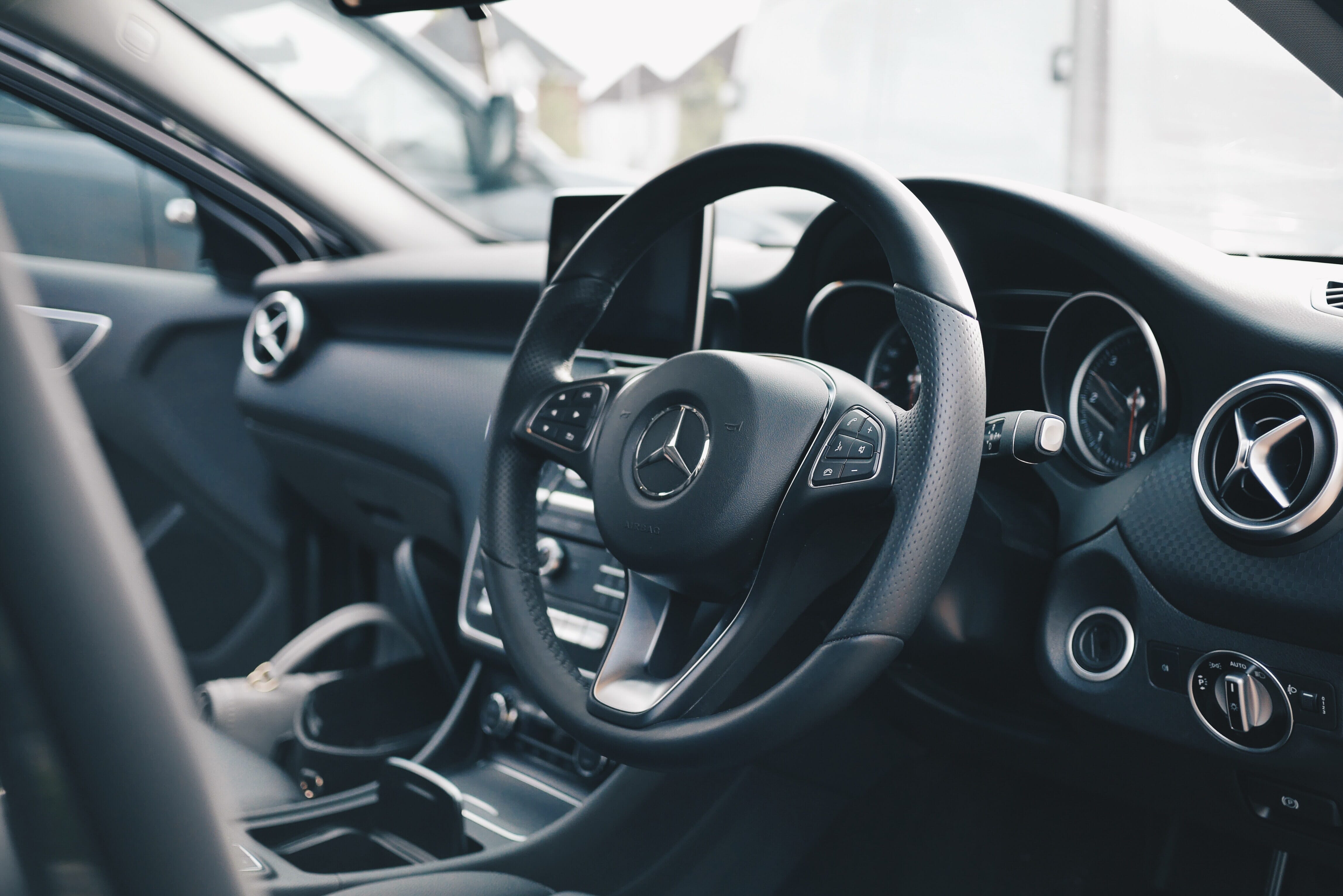
It is always advisable to shoot a car from beyond the exterior. The interior is a playground of its own when it comes to shooting and the fact is, this is what buyers of a car will be seeing day in and day out.
Your exterior shots serve to create a first impression that must be compelling to drive a customer to approach and open the door. But the view inside is what ultimately wins the buyer over. For this reason, good interior shots are key.
There are so many iconic American cars that catch the fancy of an enthusiast. The 1968 Ford Fastback Mustang GT or the 1957 Chevy Bel Air, for example, look awesome from both the outside and the inside.
Comparatively, modern cars are packed with all the bells and whistles and easily make for a compelling photo.
6. Try Photographing a Car When It Is Moving
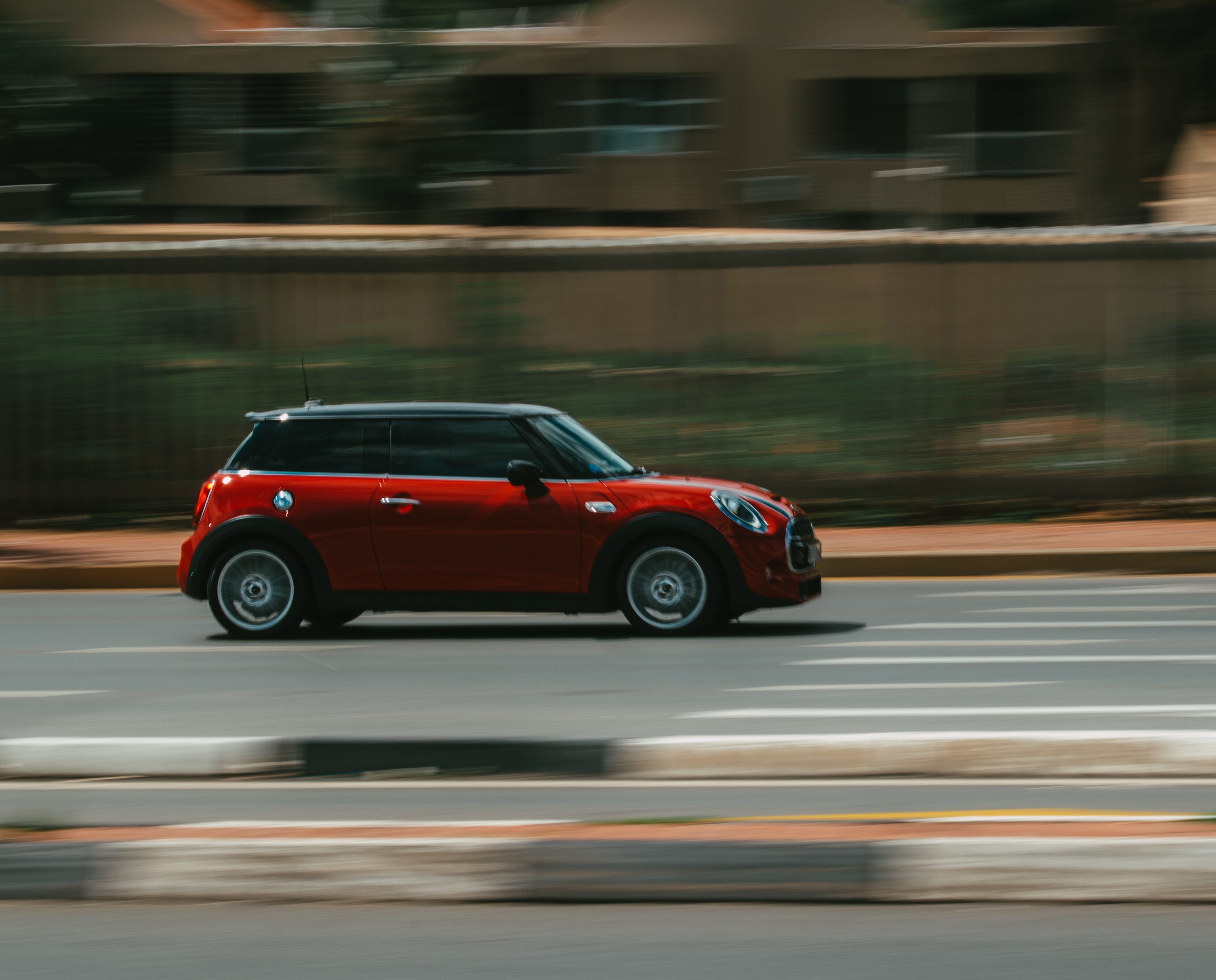
A car is meant to move, and some of the best images of a car are the ones where you capture motion. That, however, is the tricky bit. How do you capture motion in a still image?
The trick is in focusing on something fixed on the car while it is moving.
How do you shoot a car that is moving?
Get in a moving car yourself.
When it comes to camera settings, you need to consider the following:
Try and use a slightly longer shutter speed. Say your camera meters the scene at f/8 to 1/250 of a second. To extend the shutter speed for that motion blur shot, drop your aperture down to around f/11 and keep your ISO as low as possible. Your shutter speed will lengthen to compensate, making for a longer exposure.
A key thing to remember is that you should keep the wheels in the frame to capture their spinning motion.
It goes without saying, this is a risky task to do. So, we recommend that you adhere to the best safety measures you can. You should always have someone looking out for you when you peek out of a moving vehicle to photograph another that is moving alongside.
7. A Car Shot Looks Great When It Is Amid Nature
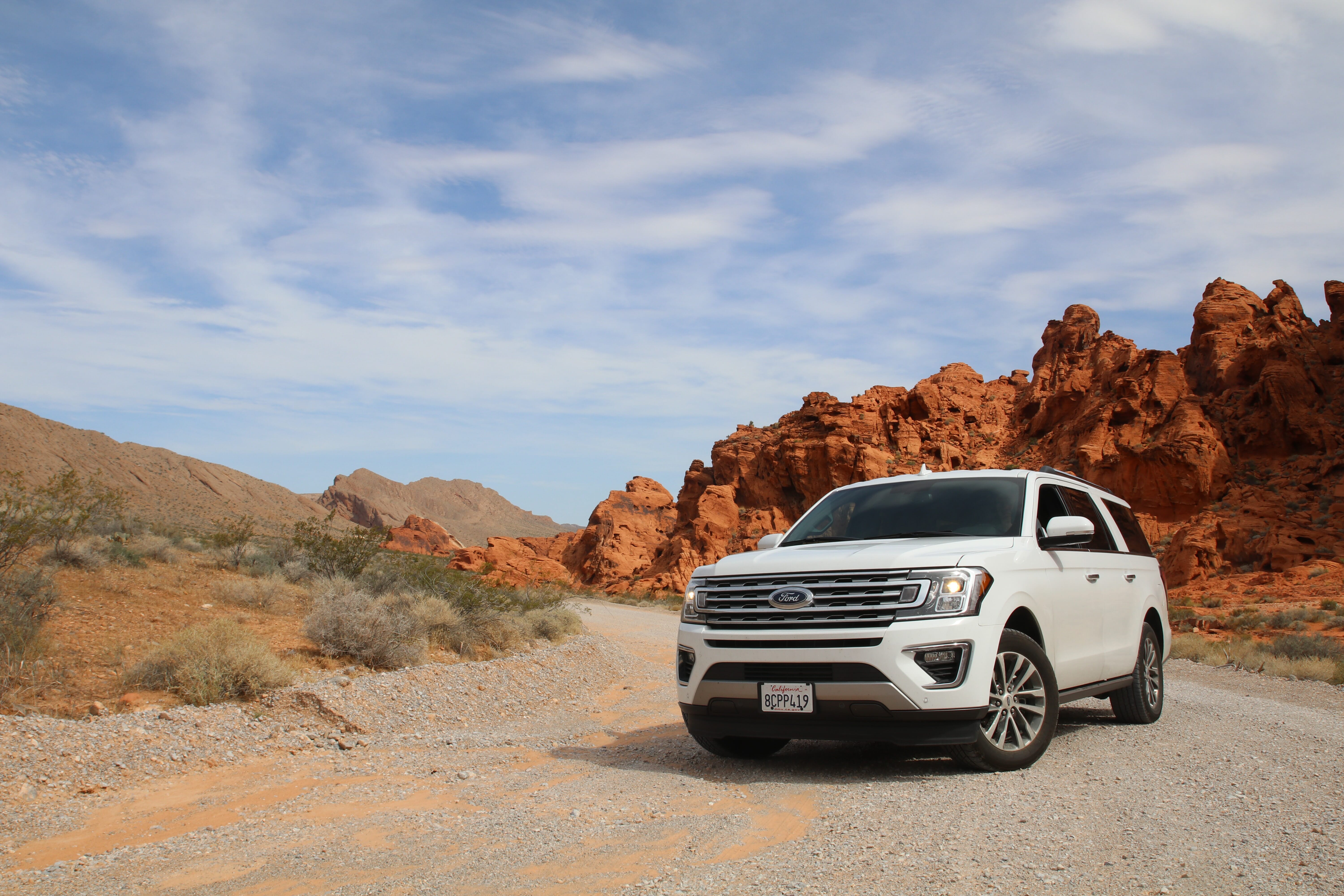
Nature has a way of accentuating and adding to a photo of a car.
Why?
Because cars are meant to be driven on open roads and there is no better way to capture the thrill of the open road and that feel of the wind on your face than by incorporating different elements from nature.
You could try shooting your car amidst a mountain, a rugged outback, trees, or a riverbank.
Think about the vehicle you’re photographing. Is it meant for heading off-trail? If so, shoot it on those rugged dirt roads. Is it a luxury sedan? This type of car will look best on a curvy stretch on a freeway.
There are no hard and fast rules here. So, you are free to experiment and run wild with your imagination. Try to capture the essence of what you believe the car to have.
8. Try Shooting Indoors with Controlled Lighting

Shooting car photography indoors is a challenging thing to do.
First, you need to set up artificial lights. These lights can create havoc because they produce reflections. For this reason, you should, at all times, use large, diffused lights. The larger the light source, the softer the light produced.
Shooting car photography indoors requires a very elaborate set-up. Your key lights should be set up directly overhead so that there aren’t any reflections caught on the body of the car.
Additionally, try and incorporate white walls because white walls tend to produce a diffused reflection of the key light which in turn acts as your fill light for the body of the car. You can also set up large white backgrounds in three directions as if you are trying to create a large lightbox for your car.
Finally, incorporate circular polarizers. Circular polarizers help you to cut down on glares and reflections.
9. Use the Technique of Light Painting
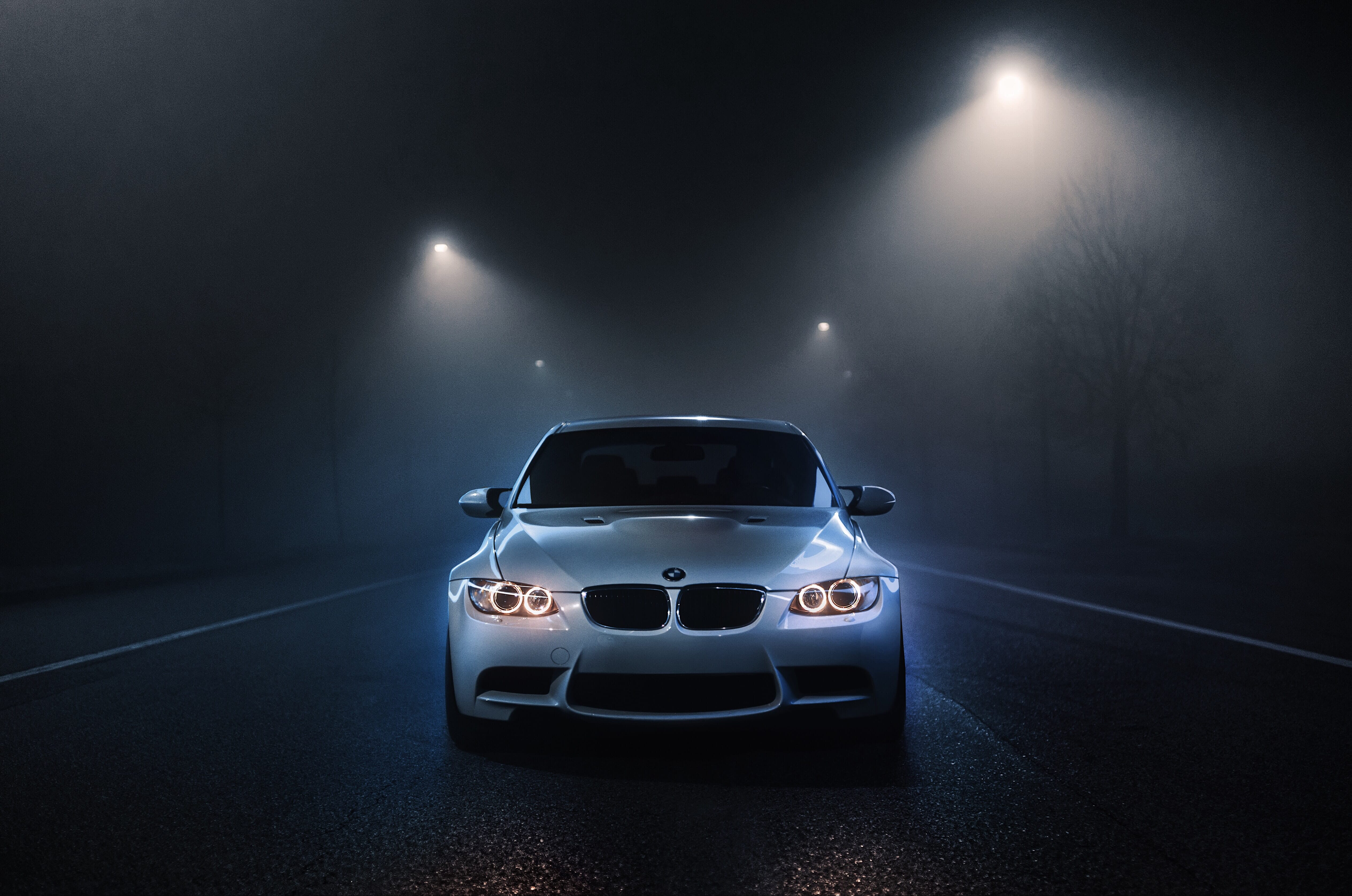
Light painting is an interesting technique in photography. It involves the use of a small hand-held light source which you use to literally “paint” a subject over a long shutter speed.
Please note that for light painting, you will need to implement some additional tricks as well.
First, you need to set up your camera and lens on a tripod. When you’ve got the key setup right, you need to set a shutter speed that is at least 10 seconds. That will allow you sufficient time to paint the car.
Light painting will work the best when you are shooting at night and especially against a glittering background. Such as the city lights at night.
Choose a small aperture and select the smallest ISO number. That should automatically allow you to drag the shutter speed to several seconds. Start with 10 seconds as the ballpark figure and then adjust as you go along.
10. Highlight the Best Bits

A shiny brand-new car or a well-maintained vintage car have a lot of small detail that you can highlight in your photos. You do not have to always keep the entire car in the frame to make a compelling image.
The small details like the logo, or the interesting dual-tone design of the front grill, or the badging at the back of the car are all great subjects to photograph. These can make up several interesting product shots to go with the main images.
Sometimes, even the uniquely cut hubcaps of a car, especially with the logo and detailing, can also make for an interesting image.
11. Try to Incorporate Motion Blur in Your Photos

We have already learned that a moving car creates a more compelling image compared to one that is stationary.
Cars are built to go fast and, therefore, no matter how beautifully you produce an image of a stationary car, an image where the car appears to be moving makes for a far more compelling image.
When you capture an image of a moving car invariably there will be some motion blur captured with it. Whether it is the wheels spinning or the background flying past or anything else for that matter. Try to capture these elements in a bit more convincing and tasteful manner and your images will appear a lot more interesting.
To incorporate motion blur in your photos you must master the technique of panning. Panning involves half-pressing the shutter release button to lock focus on a subject and then moving the camera (with the lens aiming at the subject) along with the subject, keeping it in the frame, and most importantly in focus.
At the precise moment when you fully depress the shutter release the shot will be made, keeping the subject in focus but everything else blurry.
12. Apply the Portrait Rule for Car Photos, Avoid Distracting Backgrounds

Always avoid any distracting backgrounds in your image. We have already learned above how the shiny body of a car can literally reflect everything around it like a mirror. So, it is best not to have anything around the car when photographing.
But what about the background and the foreground?
Just as you would avoid something distracting in your portrait composition, whether it is in the background or the foreground, you should also avoid anything that does not add to the image in your car photos.
13. Use Depth of Field in a Creative Way

One thing we have noticed when shooting small details of cars is that shallow depth of field can really enhance the quality of the photos. A shallow depth of field helps us to narrow down the focus of the image. Anything that you are not planning to incorporate into the image will be obscured.
Plus, a shallow depth of field helps to really focus on areas that you want to highlight. Such as the logo of the car, or the grill, or the character lines on the fender. There are many small, interesting components that you may choose to highlight.
14. Use a Drone

Drones are increasingly being used for shooting at weddings, parties, architecture, vacations, and so on. Many YouTube vloggers are successfully using drones to record their reviews and B-rolls. But why limit yourself to just videos?
Drone cameras are just as useful as still cameras with the added advantage that they can shoot from just about anywhere. A birdseye view of a car, or some variant, will make for a really interesting and unique shot.
15. The Human Element

Because cars are driven by people, there is no denying that humans play an important role in car photography. If possible, try and capture some photos including a person. Add that human touch.
By including a person, your pictures are also compelling to potential buyers of the car. They can envision themselves in place of the person you’re photographing.
So yes, shoot with a human element if possible, it’ll add a little something extra to your images.
16. Bring Everything Together to Capture the Car’s Personality
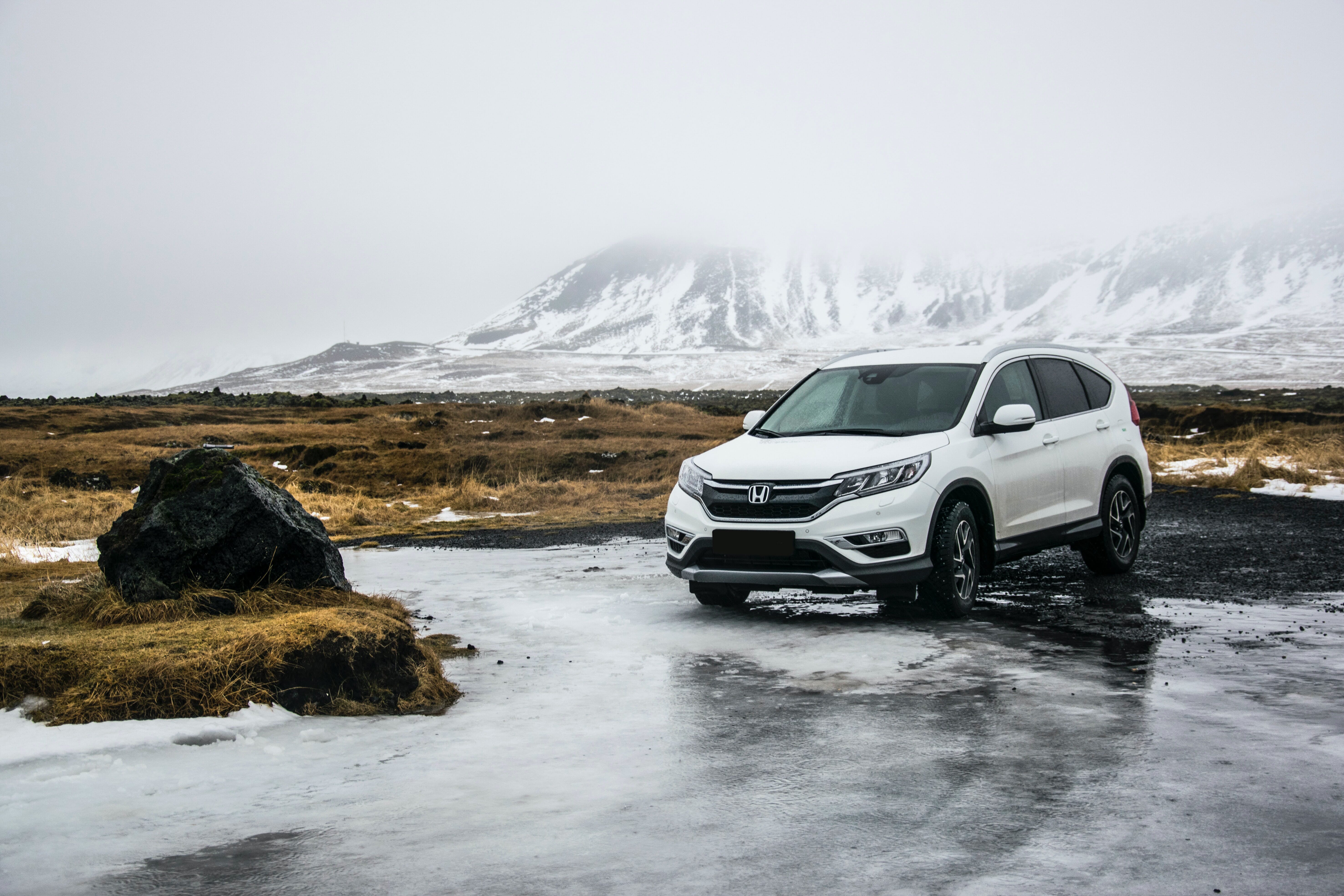
Every car has a different personality. As a car photographer, you must be an automobile enthusiast first before you can appreciate those fine lines, chrome touches, and shiny brand logos. Shooting from a low angle, or using a shallow depth of field, or using a wide-angle, everything depends on the personality of the car and how you envision that will come through in the final image.
Car Photography Tips: Wrap Up
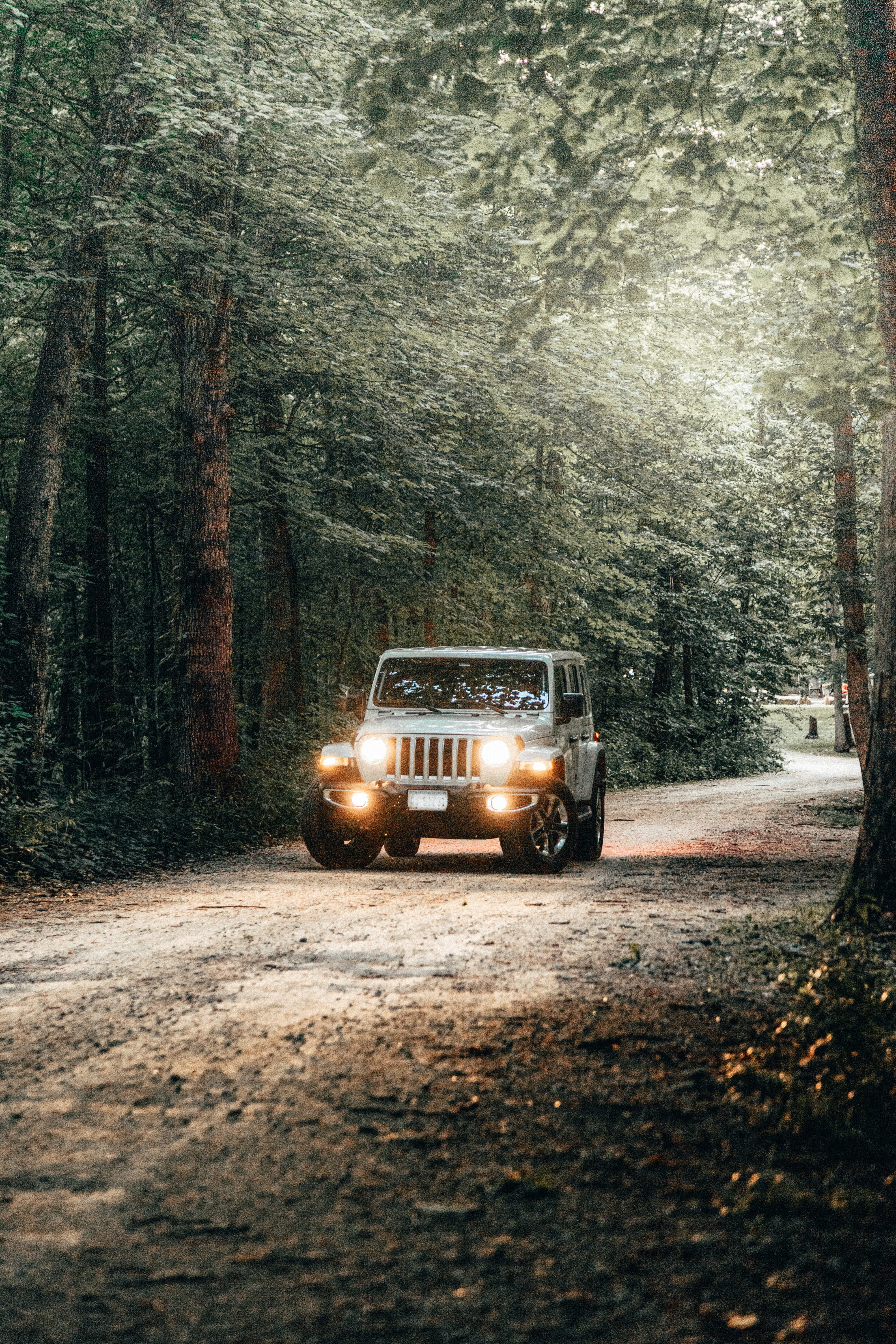
As we stressed in the previous point, you have to be an automobile enthusiast first and a photographer second. Unless you fall in love with the car, you are not going to make images that will make others fall in love with the machine.
The car photography tips and tricks we shared above are just a few broad strokes. There are infinitely more that you will figure out yourself as you progress. Remember, there are no hard rules here. A car is an object of desire and your photography must capture that emotion.
Car Photography FAQ
How Do You Take Great Images of a Car at Night?
Light painting is one way of achieving that. You could shoot with a slow shutter speed with the camera on a tripod.
What to Take Panning Shots of a Moving Car?
The easiest way to take a panning shot of a car is to use the back button focusing technique. Use any assigned button for focusing to lock focus, pan with the car as it moves, and fire away a continuous burst of frames as it goes past you.
What Is the Best Lens for Car Photography?
A wide-angle lens is a quintessential lens for shooting car photography. But you can experiment with a lot of other lenses. We will forbid the use of a short focal length macro lens because there is the risk of capturing your own reflection in the image.
